Valley of Flowers is my own version of paradise. A valley of unparalleled landscape covered with the flower beds of contrasting colours, discrete scents and different appearance where the majestic mountains touch the sky; low-lying clouds hang in the air; cascading waterfalls fall gracefully from the mountains; milky Pushpawati River flows in the middle; small water streams cross in the paths; the Tipra Glacier stands tall at the remote end. Valley of Flowers is something beyond a wild imagination. As far as you can see on the ground, there are colourful flowers blooming in the full glory with a widespread hue of red, yellow, blue, pink, purple, white, etc.
Embracing the arms of my wife Nidhi in my arms, I walked all across to the length of the lush valley, until a raging water stream forced us to return. The flower carpet turned green to white to blue to red and then there was barren brown of the rocks changing into black and grey of the mountains at the remote end. The three-hours time that we spent inside the paradise was enough to cherish for the lifetime.
Contents
- Trekking Inside The Valley of Flowers
- Location of Valley of Flowers
- How to Reach Valley of Flowers?
- Best time to visit Valley of Flowers
- Permit Requirements for Valley of Flowers
- How difficult is Valley of Flowers Trek?
- Accommodation at Valley of Flowers
- Mobile Connectivity in Valley of Flowers
- Is it possible to trek Solo to Valley of Flowers?
- Important Things To Remember
Trekking Inside The Valley of Flowers
The final trek to the valley was started from a tiny village Ghangaria, the base camp for Valley of Flowers Trek as well as Hemkund Sahib Trek. We reached to the entrance of the valley pretty early in the morning to find none on the ticket counter. The irony was the pilgrimage route to Hemkund Sahib, where hundreds of Sikh Pilgrims were walking on a difficult trail to reach at the top, but none was there at the entry gate of the paradise. After few minutes of waiting at the gate, two gentlemen appeared and handed over 3-days permit to us. The only condition was we had to move in every day in the morning and move out in the evening, since no night camping was allowed in the valley. They also requested us not to litter anywhere as we were carrying some packed foods and biscuits.
Detailed Information about Ghangaria Village: The Base to the Paradise
We were scared to move further without some more companions and started waiting for few more tourists. But nobody arrived in 30 minutes. We started moving towards the valley. The sun was playing hide and seek into the clouds. Slight rain was also there. The trekking route was more spectacular, yet frightening. We passed through a deep forest along with a deep gorge of Pushpawati River. Wherever you see from top to down, there was a scene of absolute serenity in the valley. Hundreds of meters below us there was a fiercely flowing river amidst the sharp rocks, and hundreds of meters above us was milky waterfalls and hanging clouds on the towering mountains. We stopped for a while to enjoy nature at its best.
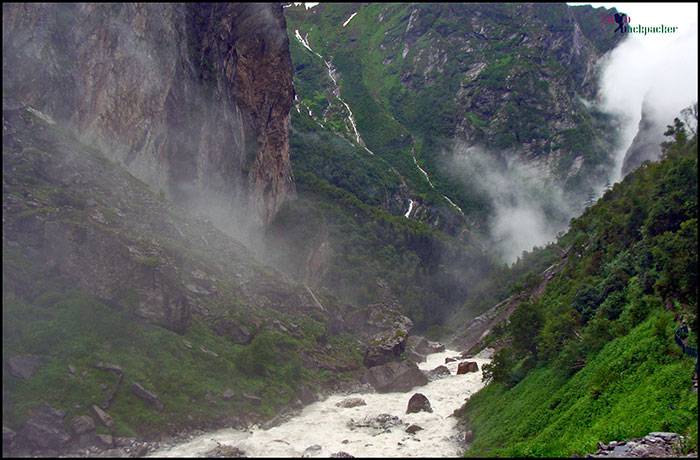
Moving farther, we reached to a wide glacial sheet restricting our path. We had to move on the sheet to reach on the other side of the glacier. I thought the ice could break while crossing or there might be a big opening under the ice-sheet, so I decided to cross it from the top end of the sheet. We climbed for 50 meters uphill and realised there was no way to descend on the other side. Disappointed, we descended again to the same place.
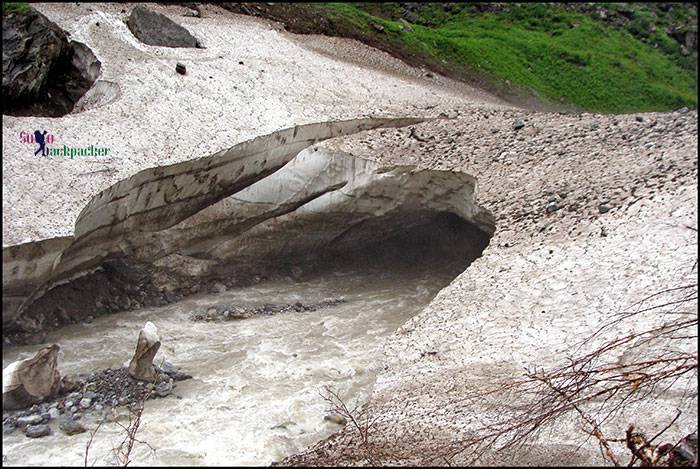
After much consideration, we made up our mind to move further on the glacial sheet. Nidhi was uncomfortable with the shoes, so she removed them. At the same moment, we observed a foreign couple approaching towards us. They also got puzzled on the crossing. The lady trekker was surprised to see the Nidhi barefoot on the ice sheet. The man glanced on the sheet and asked whether we were sure the sheet would not break. We were also clueless. There was no option other than to walk on the sheet. We noticed a trail of the footmarks and followed them to cross the ice-sheet. It was damn easy to negotiate that.
We were four people there, and all the apprehensions of being alone was carried away. Just as we turn on the bend, I found myself awestruck with the magnificent view. There was an abundance of unspoiled beauty. It was remarkable how one flower replaced another to create a distinctive hue in a broad area. It was a dream come true. I was assured this was where the Gods live.
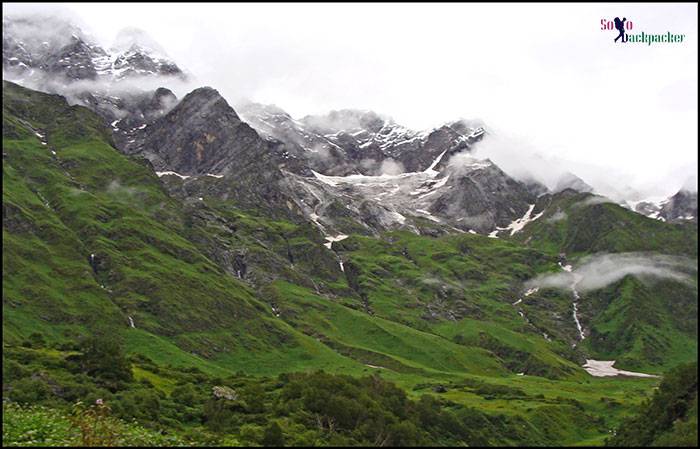
Frank Smythe – mountaineer, explorer, botanist, introduced this place to the world in 1931. He chanced upon this place after successfully scaling a peak in Garhwal, Kamet, which was 25,447 feet in height. While returning, he wanted to take a different path, so he returned through the western pass and incidentally descended in this valley. What a discovery it was! Later, In his book Kamet Conquered he wrote,
“Beyond the hills, nations might fly at one another’s throats; Mussolini’s rise and falls; anarchy and revolution rot the nations; but in the Valley of Flowers the only strife would be that of the elements, the only sounds the wind in the flowers, the voice of the stream, and the rumble of the avalanches.”
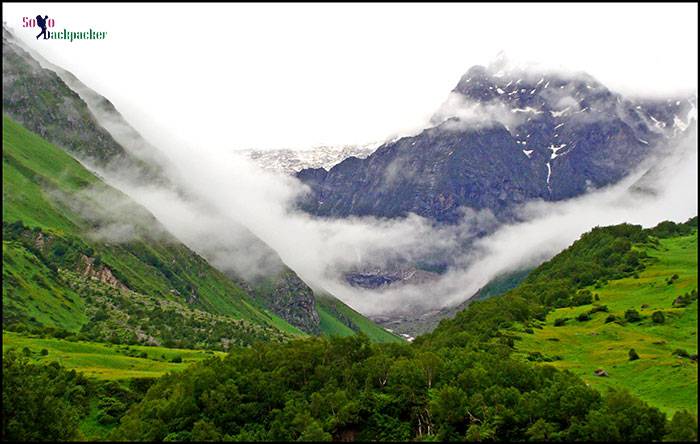
There were a lot of streams flowing down from the mountains into the Pushpawati River. Makeshift tin and wooden bridges were there to cross the water streams. The lush vegetation was wet due to the frequent rains. The floor of the valley was not visible as it was completely concealed by the flower beds. All of sudden I realised I was simply surrounded by the beautiful flowers touching my body here and there.
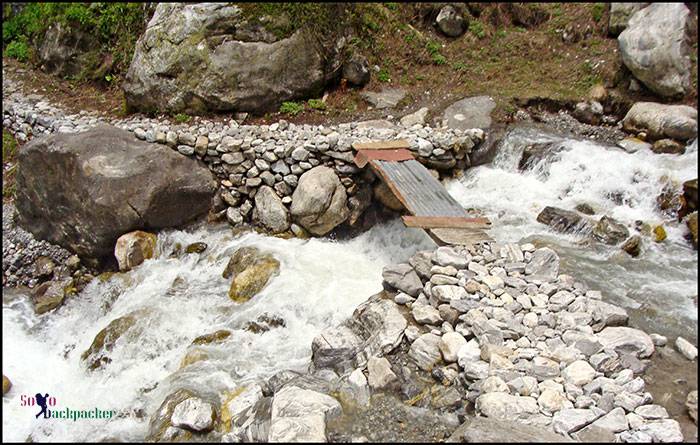
In the lower section of the valley, there is a grave of Joan Margaret Legge, the brave lady who brought recognition of the valley to the world. A Botanist deputed by Botanical Gardens of Edinburgh, Joan Margaret Legge, came to the Valley of Flowers in 1939 for further studies. While collecting flora samples, she slipped from a rugged slope and was forever lost in this Garden of the Gods. In 1943, Joan Margaret Legge’s elder sister visited the valley and erected a memorial for her sister. The marble epitaph reads:“I will lift my eyes unto the hills. From whence cometh my help. (मेरी दृष्टि हिमालय के उन शिखरों पर जाएगी, जहाँ से मुझे शक्ति आई है।)”
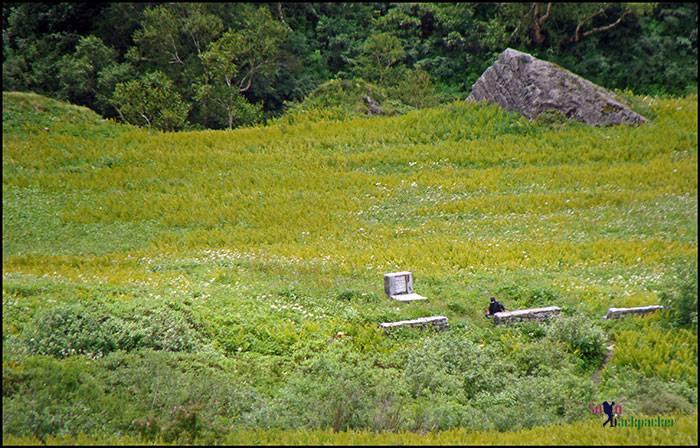
By Noon, there were almost ten people inside the valley. The number was still negligible than the people walking to the Hemkund Sahib. Someone pointed out to the high entry fee to the valley, but I don’t think that Rs.150 is a high-priced ticket for the numerous visitors. There may be a reason that most of the people are not aware about this enchanting paradise. However, this ignorance looks like a bliss for the valley. It is still away from the onslaught of the crowds, thus able to preserve its authentic character.
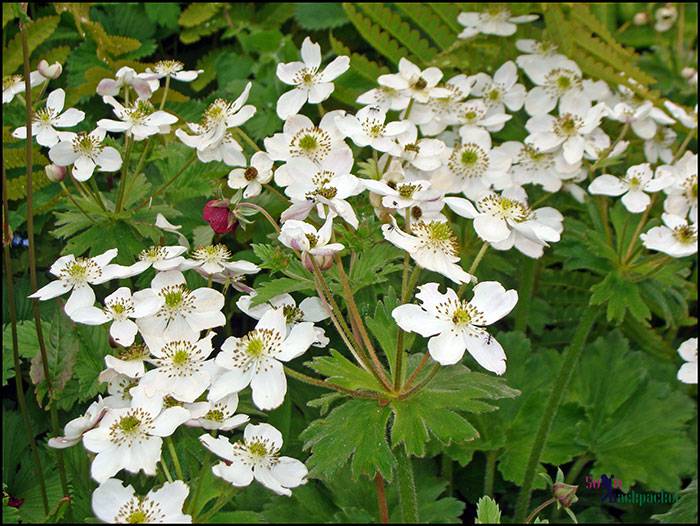
There was no reason to return back. In fact, no one was in mood to return so soon. But we were supposed to reach at the entry gate by 5 PM. There was no choice. With heavy heart, we bid adieu to our paradise and returned to Ghangaria Village. Our permit was valid for two more days but back in Delhi, there was a corporate life waiting for us. Like most of the tourists I also didn’t go to the valley again. Rather, I trekked to Hemkund Sahib the next day and then returned to Joshimath on the following day.
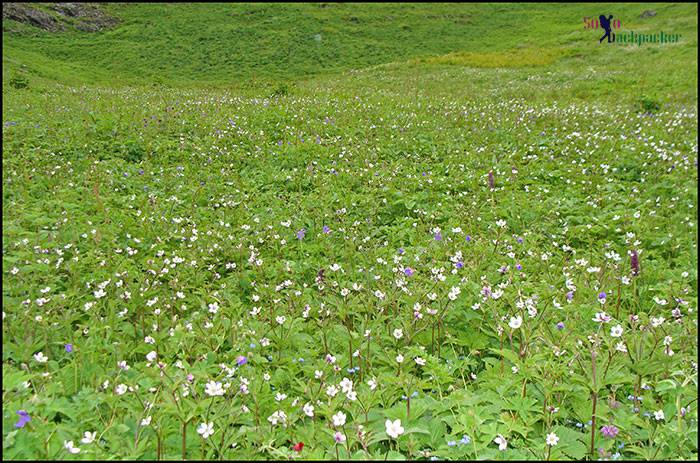
Location of Valley of Flowers
Valley of Flowers is a national park located in Chamoli District of Uttarakhand. The gentle landscape of the Valley of Flowers National Park is the second core zone of Nanda Devi Biosphere Reserve, a UNESCO World Network of Biosphere Reserves. The other core zone of this biosphere is the Nanda Devi National Park that represents a vast wilderness of rugged mountains. Valley of Flowers is a high-altitude valley.
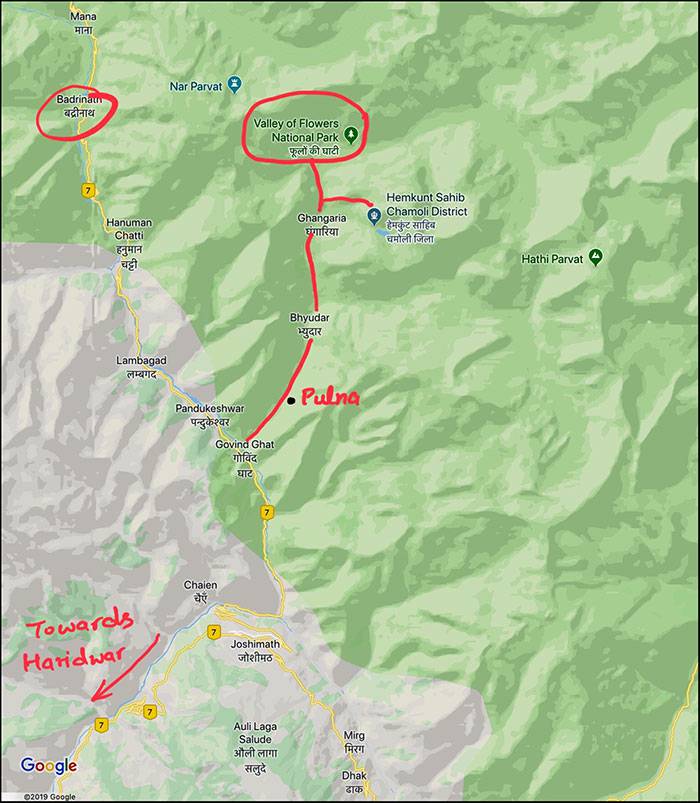
How to Reach Valley of Flowers?
Reaching Valley of Flowers is a four step process:
Step 1. Reaching Haridwar, Rishikesh or Dehradun from anywhere in India: Haridwar and Rishikesh are the better choices. You can get many public buses and trains from Delhi to Haridwar and Rishikesh. There is an airport in Dehradun known as Jolly Grant Airport. This airport is connected with major cities in India by direct flights. The airport is approx 30 kms away from Dehradun city. After reaching at the airport, it is better to proceeds to Rishikesh (21 kms) instead of going to Haridwar or Dehradun.
Step 2. Public Buses from Haridwar/Rishikesh to Joshimath/Govindghat: Haridwar bus stand is located next to the railway station, while Rishikesh bus stand is about 1.5 kms away from the railway station. Private bus stand in both the cities are adjacent to the government bus stand. Direct public buses are available from Haridwar and Rishikesh to Joshimath. The bus journey takes about 12 hours (Rishikesh-Joshimath, 254 kms) and the bus fare is approx Rs. 550 per person.
You can also board a direct bus going to Badrinath from Haridwar or Rishikesh. This bus will drop you at Govindghat, starting point of the Valley of Flowers trek. Govindghat is 21 kms ahead from Joshimath on the road to Haridwar. There may be 3-4 buses in the morning. Last direct bus to Badrinath leaves from Haridwar/Rishikesh in the early morning, not later than 6.30 AM from Rishikesh. If a direct bus to Haridwar is unavailable, then you can get a direct bus to Joshimath, but not later than 7 AM from Rishikesh.
Read more about Joshimath: The winter adobe of Lord Badrinath
Due to the Gate system, no vehicle is permitted beyond Joshimath after 6 PM. In this case, you have to stay at Joshimath for a night. Next morning, you can get a shared jeep from Joshimath to Govindghat (or Badrinath). Badrinath Dham is 25 kms away from Govindghat.
Gate System: It is something like a time-slot. When gate is open, vehicular traffic can move farther on the mountain road, and only one side movement of vehicle is allowed. So gate open timings at Joshimath towards Badrinath are 5.30 AM, 7.30 AM, 9.30 AM, 11.30 AM, 1.30 PM, 3.30 PM and 5.30 PM. It means if you will reach Joshimath by 6 PM from Rishikesh, you will not be allowed to proceed further till the next gate open, that is at 5.30 AM next day. So, try to catch the earliest available bus from Haridwar and Rishikesh to Badrinath.
Step 3. Trek from Govindghat to Ghangaria Village: If you reach Govindghat in the evening, it is unadvisable to trek to Ghangaria in the night through the forest. The whole 13 kms trek will take 4-6 hours depending on your fitness. Rain is likely to occur anytime there. So, if you reach Govindghat after 2 PM, its better to stay there for a night and trek to Ghangaria next day morning. Few years ago, a bridge was constructed on the Alaknanda River at Govindghat. Now, you can get a shared jeep upto Pulna Village, 4 kms ahead on the trek route (Fare, Rs 35). If you reach Pulna Village by a vehicle, then you are supposed to trek for 9 kms to reach Ghangaria Village. If you are uninterested in the trek, then you can also hire a porter or mule to cover this distance.
Step 4. Trek from Ghangaria Village to Valley of Flowers: The vast expanse of the valley starts after 4-kms easy trek from Ghangaria Village. You can further trek in the valley for 3-4 kms as well before returning to Ghangaria Village. Night stay or night camping is not allowed inside the valley. Therefore, everyone must start their return journey by 3 PM to reach Ghangaria well in time. No porter or mule is allowed on this route.
Helicopter Services: Helicopter services are also available form Govindghat to Ghangaria and the fare is Rs. 3500 per person for one way ticket. Seasonal Helicopter services for Ghangaria Village are also available from Gaucher Airport near Karnaprayag and the fare is Rs. 15000 per person for one way ticket.
Journey from Bareilly/Haldwani/Kathgodam/Nainital: A comfortable and pleasant bus journey can also be planned on a beautiful highway from Haldwani to Karnaprayag. From Karnaprayag, you can get a shared vehicle to Joshimath, 82 kms away. If a direct bus is unavailable, then one can travel on this route by changing shared jeeps at Garud, Gwaldam, Tharali etc. You may have to stop somewhere in the night, but this road passes through the beautiful towns of Uttarakhand, like Nainital, Almora, Baijnath, Kausani and Gwaldam. The journey on this road is worth for all the time and effort undertaken.
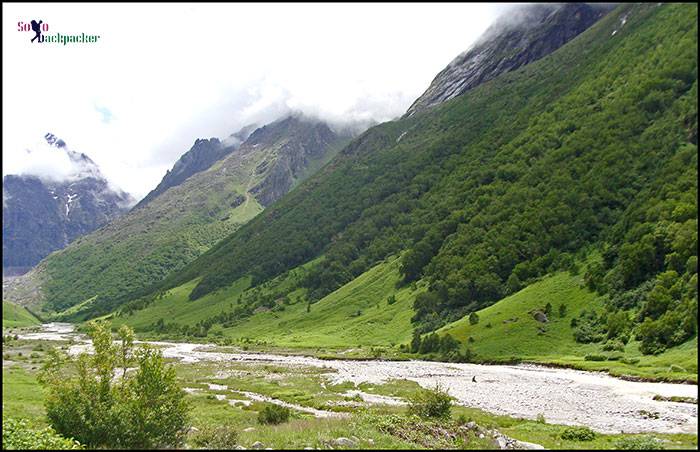
Best time to visit Valley of Flowers
The Valley of Flowers National Park stands open from the first week of June to the first week of October normally. However, the best time to visit the valley is considered in the month of monsoon from mid-July to mid-September. This is time when you can feel the monsoon magic with lot of green shades, hanging clouds, milky waterfalls and blooming flowers in its full glory. Be careful during the monsoon as it is also the time with maximum chances for the landslides and torrential rains.
Permit Requirements for Valley of Flowers
Permit to enter in the Valley of Flowers National Park is available instantly at the entrance of the park. Normally, 3-days permit are issued for the Indian (Rs. 150) as well as the foreign nationals (Rs.600) . You can use the same permit to visit the valley for three days consequently, but night stay is not allowed inside the valley. Therefore, you have to get in each morning to get out in the evening. After 3-days expiry, the additional permit cost is Rs. 50 per day for the Indians and Rs. 250 per day for the foreign visitors. Most of the tourists explore the valley for single day only. Still Cameras and Normal Video Cameras are free to use. For professional video cameras, the ticket price is Rs. 500 for the Indians and Rs. 1500 for the foreign visitors.
Valley of Flowers National Park Timings: From 07.00 AM to 05.00 PM. Last entry into the park is around 02.00 PM, but you have to return by 05.00 PM (or sunset at most) as night stay and camping is not allowed inside the valley.
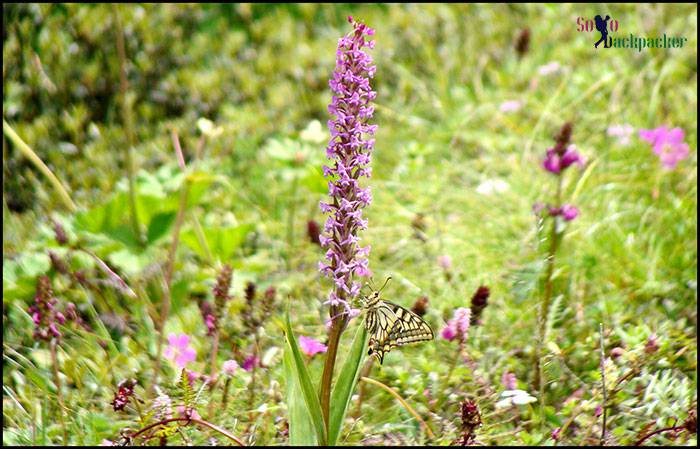
How difficult is Valley of Flowers Trek?
The trekking trail from Govindghat to Ghangaria Village is difficult to a certain extent. The trail is smooth up to Bhyudar Village, then rugged and slippery upto Ghangaria Village. The trek route is relatively easy from Ghangaria Village to the Valley of Flowers. A person with average fitness can easily do this trek. For information, another trail from Ghangaria village to Hemkund Sahib is sufficiently difficult with the steep climb and demands a good fitness to complete the trek.
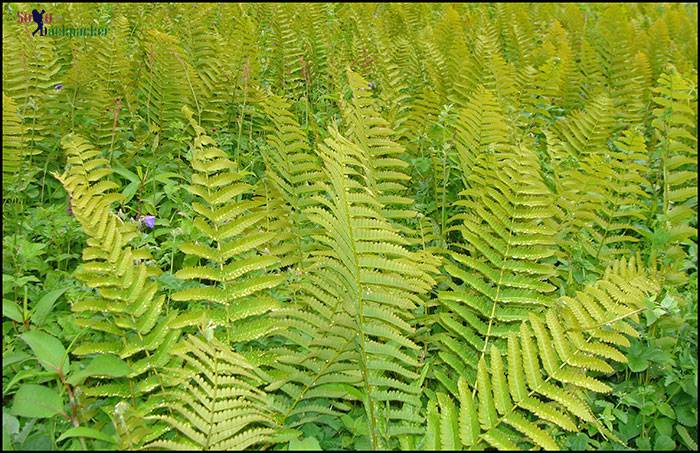
Accommodation at Valley of Flowers
Since the night camping is not allowed in the Valley of Flowers, the nearest available accommodation is at Ghangaria village. The tiny village has a GMVN Guest House, a Gurudwara, few luxury tents and many budget accommodations. On the trekking trail from Govindghat, 2-3 homestays are available in Pulna and Bhyudar villages, but there availability can not be ensured. Govindghat has variety of affordable options ranging from Gurudwara to the hotels and the resorts. Joshimath also has a GMVN guest house and plenty of other accommodation options.
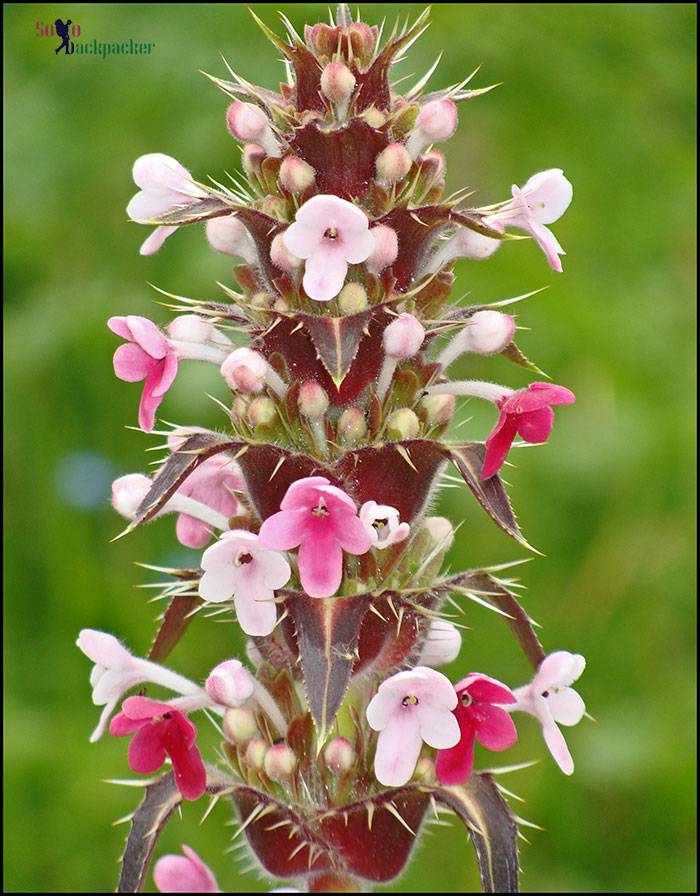
Mobile Connectivity in Valley of Flowers
Mobile networks are not available inside the valley, however, BSNL network can work at Ghangaria. Other networks are not available beyond Govindghat. Ghangaria has few STD phone shops, where you can make calls back home at the rate of Rs 10 per minute.
An equally beautiful experience from North East India: Trekking to the Dzukou Valley
Is it possible to trek Solo to Valley of Flowers?
Absolutely. Ghangaria village is an important stop on a more popular trek route to Hemkund Sahid Pilgrimage. Hundreds of Sikh Pilgrims trek on this route everyday during the tourist season. From Ghangaria village, very few tourists proceed towards the Valley of Flowers. However, the trekking trail to the valley is properly marked an fairly easy, so there is no problem to trek alone.
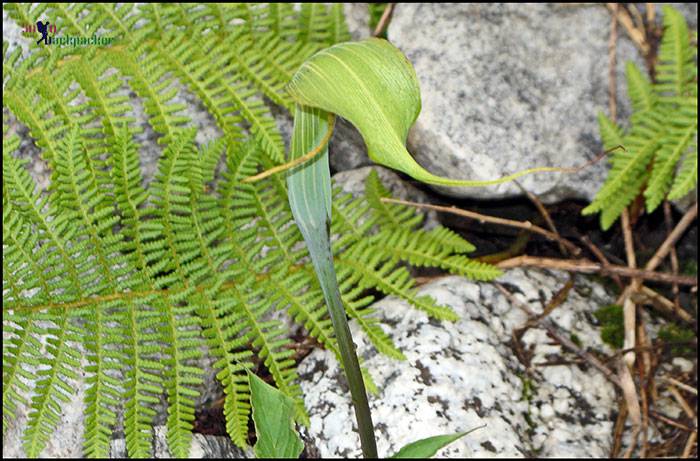
Important Things To Remember
1. ATM facility is not available beyond Joshimath, except at Badrinath.
2. Last Petrol Pump is available at Joshimath.
3. Vehicle parking is available at Govindghat and Pulna village. Better choice is Govindghat.
4. Better to carry a wooden stick, a raincoat (rain occurs anytime), a torch (if returning late) , packed foods (as nothing is there to provide food) and a water bottle, while trekking inside the valley. Water bottle can be refilled at numerous water streams.
5. Plastic items are banned. Littering is not allowed inside the valley. Bring your own garbage back.



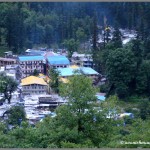
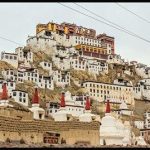
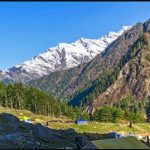
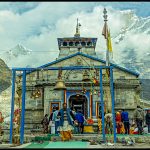
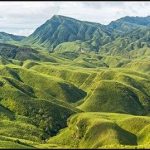
Very well explained.
Thank you! Very useful information.
It is amazing to get the most crucial info about the journey easily.. glad u did that hard work and helped the newbies to at least start..
Thank you for the appreciation. 🙂
Great info! Really helpful for someone who’s planning a valley of flowers trek. I’m sure it’s one of a kind experience. I’m glad to know that you can trek solo as well.
Glad that you like this post. Have you been to the Valley of Flowers? It’s a beautiful experience.